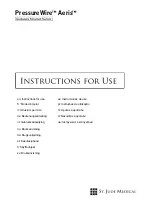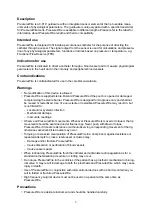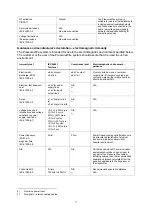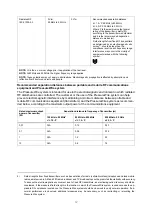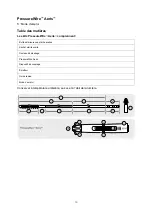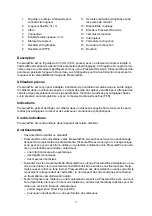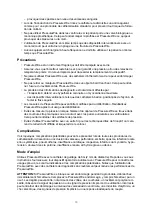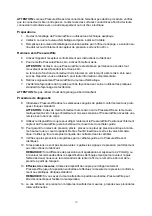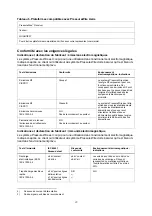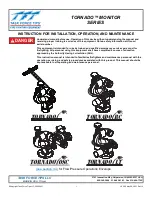
7
▪
Make sure that the transmitter is kept dry, to ensure accurate pressure and/or temperature
readings. Inaccurate reading may necessitate device replacement.
▪
Do not use PressureWire in conjunction with atherectomy catheters. It may damage
PressureWire.
▪
Do not withdraw or manipulate PressureWire in a sharp-edged object. It may result in abra-
sion of PressureWire coating.
▪
The accuracy of the diagnostic information is affected by, but not limited to:
– Failure to achieve maximum coronary and myocardial hyperaemia.
– Interventional devices, such as balloon catheters, which are positioned as they affect the
blood flow.
▪
PressureWire readings may be affected by defibrillation. Rezero PressureWire after defibrilla-
tion use.
▪
Do not measure pressure when the sensor element of PressureWire is in sharp bends or in
contact with atrial or ventricular walls. It might result in pressure artefacts.
▪
Avoid using PressureWire together with another wire, for so called jailed wire technique, due
to difficulty in wire withdrawal causing wire entrapment.
Adverse events
Potential complications which may be encountered during all catheterization procedures include
but are not limited to: vessel dissection or occlusion, perforation, embolus, spasm, local and/or
systemic infection, pneumothorax, congestive heart failure, myocardial infarction, hypotension,
chest pain, renal insufficiency, serious arrhythmias or death.
Direction for use
Use PressureWire in conjunction with 6F (2 mm diameter) guiding catheter. Refer to instructions
supplied with any interventional devices to be used in conjunction with PressureWire for their in-
tended uses, contraindications and potential complications. Note that use of PressureWire in con-
junction with uncoated diagnostic catheters may reduce the performance of PressureWire.
CAUTION:
If PressureWire gets stuck or is damaged during the procedure, immediately discon-
nect the transmitter and then replace the damaged PressureWire, including the transmitter, with a
new one. Damage may be but is not limited to kinks, bends, sheared polymer coating, no pressure
signal or inaccurate pressure signal. Incorrect use may result in vessel/ventricle damage, arrhyth-
mia induction, electric shock, inaccurate pressure signals or inaccurate torque response.
CAUTION:
When PressureWire is disconnected from the transmitter during procedure make sure
the male connector does not come into contact with conductive surfaces, thus avoiding uninten-
tional connection with other equipment or electric shock.
Preparations
1.
Open PressureWire packaging using aseptic technique.
2.
Make sure that the packaging coil is flat on the table.
3.
Fill the packaging coil with saline solution through the flush port. The saline shall cover the
pressure sensor element, approximately 20 cc.
Zeroing PressureWire
4.
Activate the receiving instrument according to manufacturer’s instruction.
5.
Zero PressureWire by turning on the Aeris Transmitter.
CAUTION:
Make sure to keep PressureWire stable at all time and avoid any excessive
movement during zeroing.
The transmitter’s function indicator shall display a stable green light when it is successfully
zeroed. Please refer to table 5 for further information.
Summary of Contents for PressureWire Aeris
Page 2: ...51395139A 4 ...
Page 4: ......
Page 28: ...28 Mettez l émetteur Aeris sous tension ...
Page 143: ...143 Ligar o transmissor Aeris ...
Page 178: ...178 Увімкніть передавач Aeris ...
Page 179: ......
Page 180: ......
Page 181: ......
Page 182: ......
Page 183: ......
Page 184: ......
Page 185: ......
Page 186: ......
Page 187: ......
Page 188: ......
Page 189: ......
Page 190: ......
Page 191: ......

